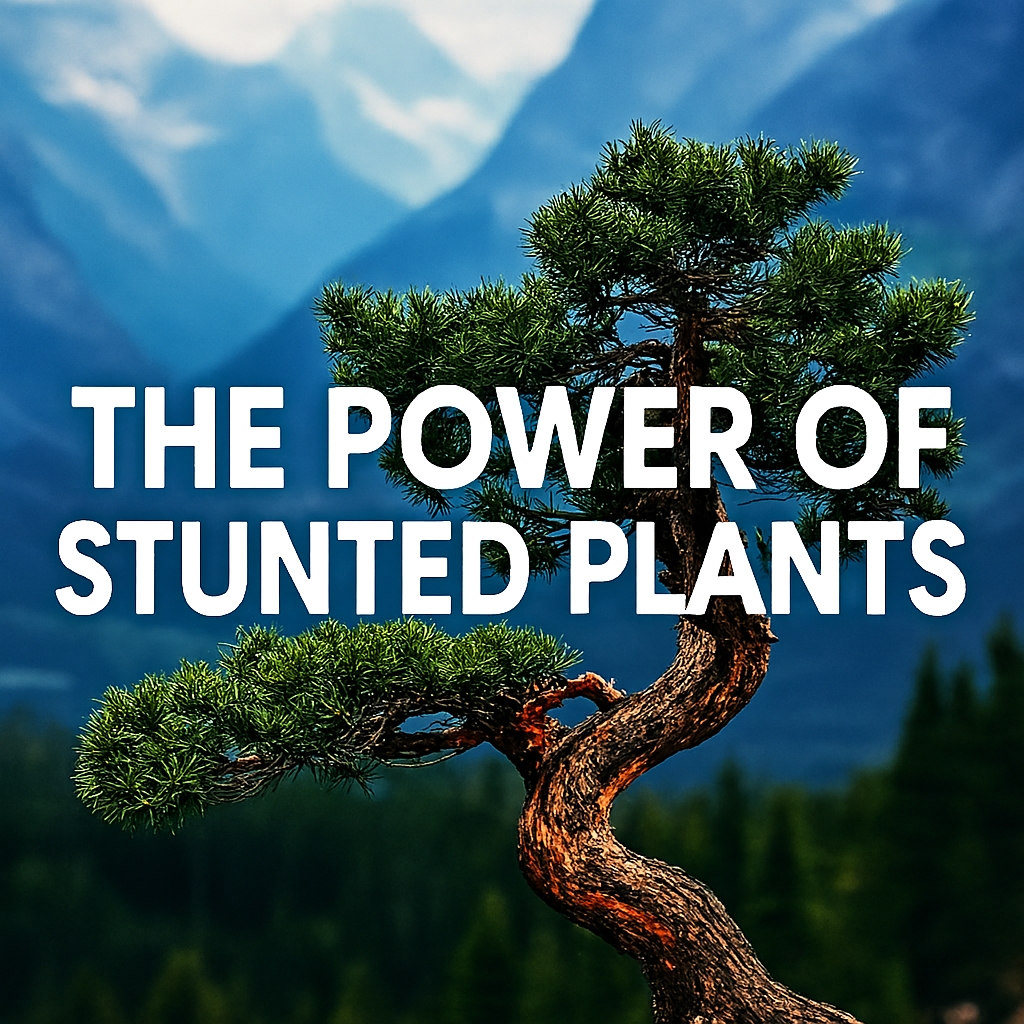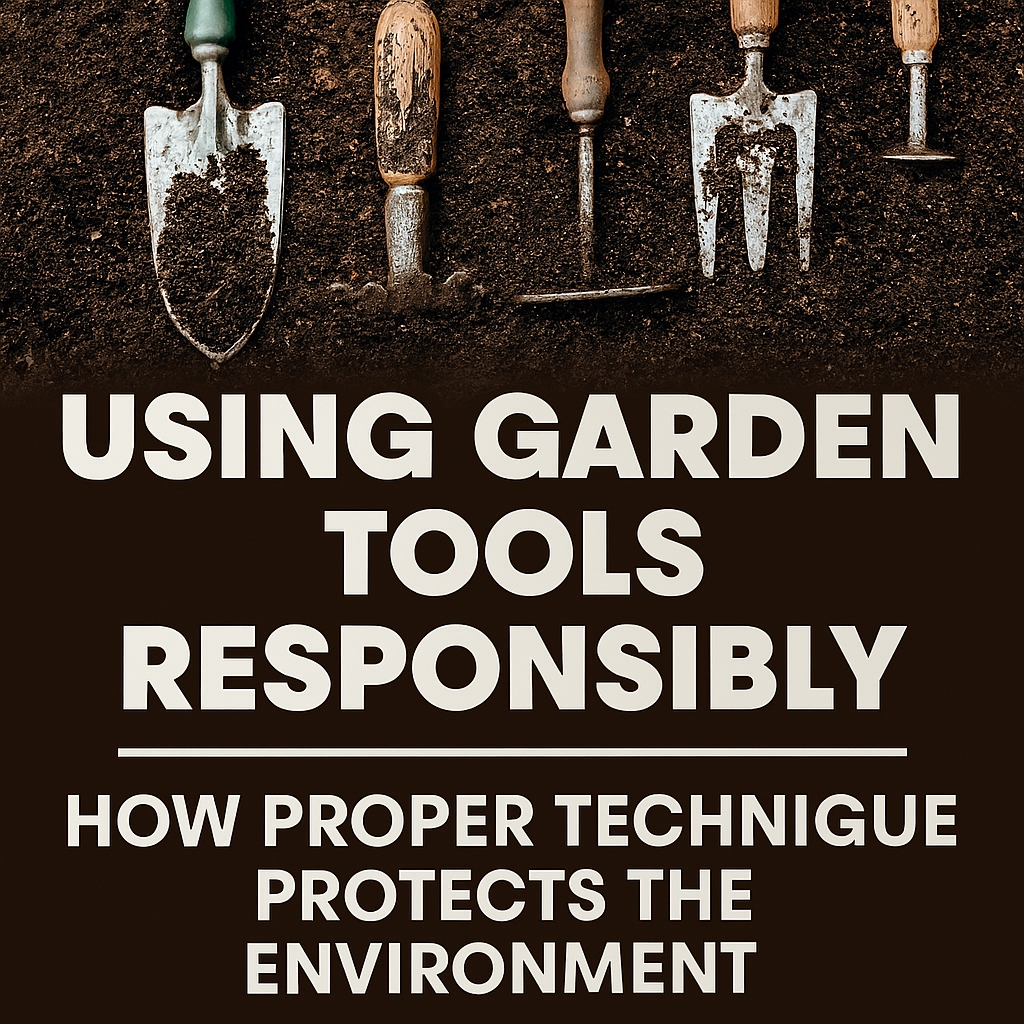Power Of Stunted Plants – Understanding The Bonsai Effect
Plants that grow in restricted environments often develop unique forms that resemble bonsai trees. This phenomenon is not limited to deliberate cultivation but can occur naturally when conditions limit expansion. Roots confined in shallow soil, exposure to harsh winds, or limited nutrients can all lead to stunted growth. Despite their size, these plants often display remarkable resilience and symbolic power. Their miniature stature reflects adaptation rather than weakness. By studying them, we gain insight into ecological balance and survival strategies. Each stunted plant tells a story of endurance and transformation.

Environmental Constraints – Roots And Soil
Plants rely on soil depth and quality to expand their root systems. When roots are restricted, the plant cannot access sufficient water or nutrients. This leads to smaller leaves, shorter stems, and compact growth. Shallow soil on rocky cliffs often produces naturally stunted vegetation. Bonsai cultivation mimics this process by deliberately restricting root space. The balance between limitation and survival creates unique forms. These plants adapt by conserving energy and focusing on essential growth. Their resilience demonstrates how life thrives even under constraint. Soil composition, moisture, and aeration all play critical roles. Understanding these factors helps explain why stunted plants endure.
| Factor | Impact On Growth | Example |
|---|---|---|
| Shallow Soil | Limits root expansion | Cliffside shrubs |
| Poor Nutrients | Reduces leaf size | Alpine grasses |
| Restricted Space | Creates compact roots | Bonsai trees |
| Dry Conditions | Slows growth rate | Desert succulents |
| Rocky Terrain | Prevents deep rooting | Mountain pines |
Adaptive Strategies – Energy Conservation
Plants that face environmental stress develop strategies to survive. They reduce leaf size to minimize water loss. They thicken stems to resist wind damage. They slow growth to conserve energy. These adaptations allow them to persist in harsh conditions. Bonsai cultivation highlights these natural strategies by shaping growth deliberately. The plant’s energy is redirected toward survival rather than expansion. This creates a balance between aesthetics and endurance. Stunted plants become models of ecological adaptation. Their survival strategies reveal the power of limitation.
- Smaller leaves reduce evaporation
- Thickened stems resist external stress
- Compact roots maximize efficiency
- Slower growth conserves resources
- Energy is redirected to survival
- Adaptation ensures long-term resilience
- Bonsai mirrors natural restriction
- Environmental stress shapes form
- Limitation becomes strength
- Survival defines beauty
Symbolism Of Stunted Growth – Cultural Meaning
Across cultures, stunted plants carry symbolic significance. Bonsai trees represent patience, discipline, and harmony. In Japanese tradition, they embody and seek the idea balance between nature, art and human influence. In Chinese culture, miniature landscapes symbolize cosmic order. Western interpretations often see them as metaphors for resilience. Stunted plants remind us that beauty can emerge from limitation. Their form reflects endurance and adaptation. They inspire reflection on balance and control. Cultural symbolism elevates their ecological reality. These meanings enrich our understanding of stunted growth.
| Culture | Symbolic Meaning | Example |
|---|---|---|
| Japan | Harmony and patience | Bonsai tradition |
| China | Cosmic balance | Penjing landscapes |
| West | Resilience and endurance | Miniature gardens |
| Indigenous | Survival in harsh lands | Desert shrubs |
| Global | Adaptation and beauty | Stunted pines |
Growth Patterns – Environmental Influence
Stunted plants grow differently from unrestricted vegetation. Their growth rate slows significantly. Their branches spread in compact patterns. Their leaves remain smaller and thicker. Their roots adapt to shallow or rocky soil. These patterns reflect environmental influence. Bonsai cultivation exaggerates these traits for artistic effect. Natural stunted plants display them as survival mechanisms. Growth patterns reveal the dialogue between plant and environment. They show how limitation shapes form and function.
- Slow growth rate
- Compact branching
- Smaller leaves
- Thicker foliage
- Shallow roots
- Adapted stems
- Environmental shaping
- Artistic exaggeration
- Survival mechanism
- Functional beauty
Microclimates – Localized Conditions
Microclimates play a major role in stunted growth. A plant growing on a windy cliff experiences different conditions than one in a sheltered valley. Temperature fluctuations, moisture levels, and sunlight exposure all vary. These localized conditions shape plant form. Bonsai cultivation recreates microclimates through controlled environments. Natural stunted plants adapt to them instinctively. Microclimates demonstrate the importance of context in growth. They highlight the diversity of plant responses. Each stunted plant reflects its unique environment. Studying them reveals ecological complexity. Microclimates are key to understanding stunted growth.
| Microclimate Factor | Effect | Example |
|---|---|---|
| Wind Exposure | Compact growth | Cliffside junipers |
| Temperature Swings | Slow adaptation | Alpine shrubs |
| Moisture Variation | Root adjustment | Desert plants |
| Sunlight Limitation | Smaller leaves | Forest undergrowth |
| Soil Composition | Restricted rooting | Rocky terrain plants |
Resilience – Survival Under Stress
Stunted plants embody resilience. They survive where larger plants cannot. Their compact size reduces vulnerability. Their adaptations ensure long-term endurance. Bonsai cultivation celebrates this resilience as art. Natural stunted plants demonstrate it as necessity. Resilience defines their existence. It shows how limitation fosters strength. These plants thrive under stress. Their survival inspires ecological respect.
- Compact size reduces vulnerability
- Adaptations ensure endurance
- Bonsai celebrates resilience
- Natural plants embody necessity
- Limitation fosters strength
- Survival under stress
- Ecological respect
- Thriving despite hardship
- Symbol of endurance
- Power in restriction
Nutrient Cycles – Limited Resources
Plants depend on nutrient cycles within soil to sustain growth. When nutrients are limited, plants adapt by changing and reducing their size. Nitrogen deficiency often leads to pale, smaller leaves. Phosphorus scarcity restricts root expansion. Potassium shortages weaken stems and slow development. Bonsai cultivation deliberately restricts nutrients to control form. Natural stunted plants endure similar limitations in poor soils. Their survival reflects efficiency in resource use. Nutrient cycles reveal how scarcity shapes resilience. Stunted plants thrive by maximizing limited resources.
| Nutrient | Effect Of Deficiency | Plant Response |
|---|---|---|
| Nitrogen | Pale leaves | Reduced leaf size |
| Phosphorus | Weak roots | Compact root systems |
| Potassium | Fragile stems | Slower growth |
| Calcium | Poor cell walls | Thickened foliage |
| Magnesium | Yellowing leaves | Energy conservation |
Water Stress – Drought And Limitation
Water availability defines plant growth. Stunted plants often grow in dry environments. They adapt by reducing leaf surface to minimize evaporation. Thickened cuticles prevent water loss. Deep or compact roots seek moisture efficiently. Bonsai cultivation mirrors this by controlling watering schedules. Natural stunted plants endure drought through resilience. Water stress shapes their miniature form. Their survival demonstrates ecological adaptation. Limitation becomes a source of strength. Stunted plants embody endurance under scarcity.
- Reduced leaf surface minimizes evaporation
- Thickened cuticles conserve water
- Compact roots maximize efficiency
- Deep roots seek hidden moisture
- Bonsai mirrors controlled watering
- Drought shapes miniature form
- Survival reflects adaptation
- Limitation fosters resilience
- Scarcity becomes strength
- Endurance defines beauty
Genetic Adaptation – Inherited Traits
Some plants inherit traits that predispose them to stunted growth. Alpine species evolve compact forms to withstand cold winds. Desert plants develop thick stems and small leaves. Coastal shrubs adapt to salty soils with reduced expansion. Bonsai cultivation enhances these traits through selective pruning. Natural stunted plants display them as evolutionary strategies. Genetics intertwines with environment to shape growth. Adaptation becomes embedded in plant DNA. Stunted plants reveal the power of inherited resilience. Their miniature stature reflects evolutionary wisdom.
| Environment | Genetic Trait | Example |
|---|---|---|
| Alpine | Compact form | Dwarf willow |
| Desert | Thick stems | Cacti |
| Coastal | Salt tolerance | Mangroves |
| Forest | Shade adaptation | Understory ferns |
| Rocky Terrain | Shallow rooting | Mountain pines |

Artistic Cultivation – Human Influence
Bonsai cultivation demonstrates deliberate stunting. Growers prune roots and branches to control size. They restrict soil depth to limit expansion. They shape growth through wire and trimming. Watering and nutrient cycles are carefully managed. This process mirrors natural restriction but adds artistry. Bonsai becomes a living sculpture. Human influence transforms limitation into design. Cultivation highlights patience and discipline. Stunted plants become symbols of harmony between nature and art.
- Root pruning controls size
- Soil restriction limits expansion
- Wire shapes growth patterns
- Trimming defines form
- Watering schedules regulate resilience
- Nutrient control enhances miniature stature
- Bonsai becomes living sculpture
- Human influence mirrors nature
- Patience defines cultivation
- Harmony emerges through design
Ecological Symbolism – Lessons From Nature
Stunted plants symbolize ecological balance. They remind us that survival does not require dominance. Their miniature form reflects adaptation to limitation. Bonsai cultivation elevates this symbolism into art. Natural stunted plants embody resilience in harsh environments. They teach lessons about patience and endurance. Their symbolism extends across cultures and traditions. They inspire reflection on balance and control. Ecological symbolism enriches their scientific reality. Stunted plants become metaphors for strength in constraint.
| Symbol | Meaning | Example |
|---|---|---|
| Patience | Slow growth | Bonsai tradition |
| Balance | Harmony with environment | Penjing landscapes |
| Endurance | Survival under stress | Alpine shrubs |
| Adaptation | Thriving in scarcity | Desert succulents |
| Resilience | Power in limitation | Cliffside junipers |
Long-Term Survival – Endurance Over Time
Stunted plants endure for decades or centuries. Bonsai trees is an art that can make plants live for hundreds of years. Natural stunted plants survive in extreme climates. Their compact size reduces vulnerability to damage. Their adaptations ensure longevity. Survival reflects ecological wisdom. Limitation fosters endurance. These plants thrive where larger ones fail. Their long-term survival inspires respect. Stunted plants embody timeless resilience.
- Compact size reduces damage risk
- Adaptations ensure longevity
- Bonsai trees live centuries
- Natural plants endure extremes
- Survival reflects wisdom
- Limitation fosters endurance
- Thriving despite hardship
- Respect for resilience
- Timeless survival
- Power in miniature form
Energy Allocation – Focused Growth
Stunted plants allocate energy differently. They prioritize survival over expansion. Leaves remain small to conserve resources. Roots adapt to shallow soil conditions. Stems thicken to resist external stress. Bonsai cultivation enhances this allocation through pruning. Natural stunted plants display it instinctively. Energy allocation defines their resilience. It reveals the power of focused growth. Stunted plants thrive by conserving energy.
| Energy Focus | Plant Response | Example |
|---|---|---|
| Leaf Size | Smaller leaves | Alpine grasses |
| Root Depth | Compact roots | Cliffside shrubs |
| Stem Strength | Thickened stems | Desert succulents |
| Growth Rate | Slower expansion | Bonsai trees |
| Survival | Resource conservation | Mountain pines |
Cultural Continuity – Global Traditions
Stunted plants appear across global traditions. Bonsai in Japan reflects harmony and patience. Penjing in China symbolizes cosmic balance. Miniature gardens in Europe emphasize resilience. Indigenous practices highlight survival in harsh lands. Each tradition interprets stunted growth uniquely. Cultural continuity enriches ecological reality. Stunted plants become symbols across societies. Their miniature form inspires reflection. They embody universal lessons of endurance. Global traditions elevate their significance.
- Bonsai reflects harmony
- Penjing symbolizes cosmic balance
- Miniature gardens emphasize resilience
- Indigenous practices highlight survival
- Traditions interpret stunted growth uniquely
- Cultural continuity enriches ecology
- Symbols across societies
- Miniature form inspires reflection
- Universal lessons of endurance
- Global significance emerges
Climate Resilience – Weather And Adaptation
Stunted plants often grow in climates with extreme conditions. Harsh winds, freezing temperatures, and scorching heat all influence their form. Compact growth reduces exposure to damaging elements. Smaller leaves conserve energy during seasonal changes. Thickened stems resist breakage under snow or storms. Bonsai cultivation mirrors these adaptations through controlled environments. Natural stunted plants endure climate extremes instinctively. Their resilience reflects ecological wisdom. Climate resilience defines their survival. Stunted plants thrive by adapting to weather challenges.
| Climate Factor | Plant Response | Example |
|---|---|---|
| Freezing Cold | Compact growth | Alpine shrubs |
| Harsh Winds | Thickened stems | Cliffside junipers |
| Scorching Heat | Smaller leaves | Desert succulents |
| Heavy Snow | Strong branches | Mountain pines |
| Seasonal Shifts | Energy conservation | Bonsai trees |
Soil Microbiology – Hidden Networks
Soil microbiology plays a vital role in stunted growth. Microbes interact with roots to provide nutrients. Limited soil depth restricts microbial diversity. Bonsai cultivation manages soil composition carefully. Natural stunted plants adapt to microbial scarcity. Symbiotic relationships enhance survival. Microbes recycle organic matter for plant use. Restricted soil creates unique microbial communities. These networks influence plant resilience. Soil microbiology reveals hidden systems of endurance. Stunted plants thrive through microbial cooperation.
- Microbes recycle organic matter
- Symbiosis enhances survival
- Limited depth restricts diversity
- Bonsai manages soil composition
- Natural plants adapt instinctively
- Microbial networks influence resilience
- Hidden systems sustain growth
- Scarcity shapes cooperation
- Soil defines endurance
- Microbiology reveals adaptation
Human Symbolism – Art And Reflection
Humans interpret stunted plants as symbols of endurance. Bonsai trees embody patience and discipline. Miniature landscapes reflect harmony and control. Artists use stunted plants to represent resilience. Philosophers see them as metaphors for balance. Their form inspires reflection on limitation. Cultural practices elevate their ecological reality. Stunted plants become living art. They symbolize strength in constraint. Human symbolism enriches their meaning.
| Symbol | Human Interpretation | Example |
|---|---|---|
| Patience | Discipline in growth | Bonsai tradition |
| Harmony | Balance with nature | Penjing landscapes |
| Resilience | Endurance under stress | Miniature gardens |
| Control | Artistic shaping | Cultivated bonsai |
| Balance | Reflection on limitation | Global traditions |
Ecological Succession – Long-Term Impact
Stunted plants influence ecological succession. Their compact size stabilizes soil in harsh environments. They prevent erosion on cliffs and mountains. Their roots create microhabitats for other species. Bonsai cultivation highlights these ecological roles symbolically. Natural stunted plants perform them functionally. Succession depends on their endurance. They prepare landscapes for larger vegetation. Their presence enriches biodiversity. Ecological succession reveals their long-term impact. Stunted plants shape ecosystems through resilience.
- Compact size stabilizes soil
- Roots prevent erosion
- Microhabitats support species
- Bonsai highlights ecological roles
- Natural plants perform them functionally
- Succession depends on endurance
- Landscapes prepared for larger growth
- Presence enriches biodiversity
- Long-term impact revealed
- Ecosystems shaped by resilience

Seasonal Rhythms – Cycles Of Limitation
Stunted plants respond uniquely to seasonal rhythms. In spring, they produce smaller bursts of growth compared to larger vegetation. Summer heat forces them to conserve energy through reduced leaf expansion. Autumn brings compact changes in foliage color and structure. Winter tests their endurance with frost and limited sunlight. Bonsai cultivation mirrors these cycles through controlled care. Natural stunted plants adapt instinctively to seasonal shifts. Their miniature stature reflects ecological timing. Seasonal rhythms define their survival strategies. These cycles highlight the dialogue between plant and environment.
| Season | Plant Response | Example |
|---|---|---|
| Spring | Small growth bursts | Bonsai shoots |
| Summer | Reduced leaf expansion | Desert shrubs |
| Autumn | Compact foliage change | Alpine grasses |
| Winter | Frost endurance | Mountain pines |
| Yearly Cycle | Energy conservation | Cliffside junipers |
Root Architecture – Structural Adaptation
Roots define the survival of stunted plants. Shallow soil forces roots to spread horizontally rather than vertically. Compact root systems maximize efficiency in limited space. Bonsai cultivation deliberately restricts root growth through pruning. Natural stunted plants adapt to rocky terrain instinctively. Root architecture reflects environmental influence. It reveals how plants endure under constraint. Structural adaptation ensures resilience. Roots become symbols of hidden strength. Stunted plants thrive through architectural ingenuity.
- Shallow soil forces horizontal spread
- Compact systems maximize efficiency
- Bonsai restricts root growth deliberately
- Rocky terrain shapes natural adaptation
- Architecture reflects environment
- Endurance emerges through structure
- Resilience defined by hidden strength
- Roots symbolize survival
- Ingenuity sustains growth
- Adaptation ensures resilience
Photosynthesis Efficiency – Light And Limitation
Stunted plants adapt their photosynthesis to limited light. Smaller leaves reduce energy demands. Compact foliage maximizes exposure to sunlight. Bonsai cultivation mirrors this through controlled placement. Natural stunted plants endure shaded environments instinctively. Photosynthesis efficiency defines their survival. They thrive by balancing energy intake and conservation. Limitation becomes a source of strength. Their miniature stature reflects ecological adaptation. Photosynthesis efficiency reveals resilience under constraint. Stunted plants embody balance between light and survival.
| Limitation | Plant Response | Example |
|---|---|---|
| Low Light | Smaller leaves | Forest undergrowth |
| Shaded Areas | Compact foliage | Ferns |
| Harsh Sun | Thickened cuticles | Desert succulents |
| Seasonal Change | Energy conservation | Bonsai trees |
| Rocky Terrain | Maximized exposure | Alpine shrubs |
Ecological Integration – Role In Systems
Stunted plants integrate into ecosystems with unique roles. Their compact size stabilizes fragile soils. Their roots create microhabitats for insects and fungi. Their foliage provides shelter for small animals. Bonsai cultivation highlights these roles symbolically. Natural stunted plants perform them functionally. Integration enriches biodiversity. They contribute to ecological balance. Their endurance supports succession. Stunted plants shape ecosystems through resilience. Their miniature stature reflects ecological importance.
- Compact size stabilizes soil
- Roots create microhabitats
- Foliage shelters small animals
- Bonsai highlights symbolic roles
- Natural plants perform functional tasks
- Integration enriches biodiversity
- Contribution supports balance
- Endurance fosters succession
- Ecosystems shaped by resilience
- Importance reflected in miniature form
Closing Reflection – The Power Of Limitation
Stunted plants reveal the profound power of limitation. Their miniature stature reflects adaptation, resilience, and ecological wisdom. Bonsai cultivation mirrors natural restriction with artistry and discipline. Soil, climate, and genetics shape their survival strategies. Microbial networks sustain hidden resilience. Human symbolism enriches their cultural meaning. Ecological succession highlights their long-term impact. Seasonal rhythms define their cycles of endurance. Root architecture and photosynthesis efficiency reveal structural adaptation. Stunted plants embody strength through constraint, teaching us lessons of balance and endurance.
Join The Discussion
How do you connect the endurance of stunted plants to your own creative or ecological practices?
#StuntedGrowth #BonsaiResilience #PlantAdaptation #EcologicalBalance #SoilMicrobiology #ClimateResilience #SymbolicNature #SuccessionAndSurvival #BotanicalWisdom #GrowthThroughLimitation #SeasonalRhythms #RootArchitecture #PhotosynthesisEfficiency #EcologicalIntegration #PowerOfLimitation













Leave a Reply